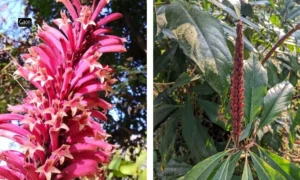Dussehra, also known as Vijaya Dashami, is one of the most distinguished festivals of India which is celebrated on the tenth day of Navratri. It celebrates Lord Rama’s victory over Ravana. This year the festival falls tomorrow, October 24.
The festival is celebrated across India, though each state has its own unique way of celebrating it, and different communities follow their own traditions for it. In some parts of India, it is celebrated as the end of the nine days of fasting observed during Navratri, while in other parts it is the day of bidding adieu to Goddess Durga.
Mysore’s Dussehra or Dasara
Mysuru (erstwhile Mysore) in Karnataka has one of the most spectacular Dussehra celebrations for over 400 years. The Mysore Dasara has been celebrated with great pomp and show.
Mysuru got its name from Mahishasura, the evil presence who was killed by Goddess Chamundeshwari on the 10th day of the Navratri, that is Vijayadashmi.
Mysore Dasara is famous among devotees and tourists for the grandly lit Mysore Palace, elephant ride, military processions and different cultural shows. The Dussehra celebrations at the Mysore Palace are a feat of beauty. Located in the heart of the city, facing the Chamundi Hills, the palace showcases Indo-Saracenic architecture that also shows elements of Rajput, Hindu, Mughal, and Gothic styles.
Chhattisgarh’s World’s Longest Dussehra
A 600-year-old ritual is celebrated in Chhattisgarh’s Bastar district with the world’s longest Dussehra. In the tribal district of central India, the festival of Dussehra spans over 75 days, which makes it the longest celebration in the country.
It takes place wherein the goddess ‘Kachhin’ bestows permission to the ‘Raj Parivar’ of Bastar to initiate the festivities. A girl, deemed as Goddess ‘Kachhin’, grants the ‘Raj Parivar’ permission to celebrate Dussehra by swinging on a swing of thorns.
Unlike the other parts of the country where effigies of Ravana are burnt, here in Bastar the community of tribal people pay tribute to the Mahishasur Mardini Adishakti.
Also Read: Navratri, Dussehra, and Nostalgia
Telangana’s floral Bathukamma
In Telangana the famous flower festival takes place during the ten days of Navratri. Bathukamma festivities are about worshipping the ‘goddess of life’ in the villages bordering Telangana and Andhra Pradesh in south India. The flower arrangements are an attempt to invoke the Goddess and seek her blessings.
Each year, this festival is celebrated as per the Shalivahana calendar for nine days starting Bhadrapada Amavasya (also known as Mahalaya Amavasya) till Durgashtami.
Dussehra in Maharashtra
In Maharashtra, gifting of “gold” or apta leaves is a central practice during Dussehra. The leaves of Apta tree are gifted to family members and elders, and these leaves are referred to as ‘sona’ (gold).
According to the legend, on this day, the god of wealth ‘Kubera’ himself converted millions of Apta leaves into gold to help an honourable scholar ‘Kaustya’ to pay ‘Guru-Dakshina’ (fees). Kautsya accepted only the ones he needed and the rest were distributed among residents of Ayodhya.
Apta leaves represent gold and people present them to friends, relatives, neighbours and wish them on the occasion.
Dussehra in the Land of the Gods, Uttarakhand
Dussehra celebration in Uttarakhand is characterised by age-old traditions and customs. In this hill state every household plants barley seeds in earthen pots on the first day of Navratri and the nine-day sprouting of the seeds is considered as symbols of luck and prosperity.
There are Ramleela performances in Almora and the other neighbouring towns. One of the unique aspects about the Ramleela in Almora is that apart from burning Ravana’s effigy there are other effigies of many of his family members that are burnt in the evening.
Uttarakhand also has Ganga Dussehra festival or Dasar Festival which is held in the period of May-June. The celebration is held for ten days where the Ganga River is venerated. According to Hindu folklore, on this day, the river Ganga plummeted from paradise to earth. This celebration in Uttarakhand begins on the Amavasya night (waxing moon) of Hindu schedule and closes on Dashami tithi (tenth day).
Also Read: Of Shakti, Sundal and Golu
Dashain in Sikkim and Darjeeling
Dashain or Dassain is the main festival of the Hindu Nepalese of Sikkim and Darjeeling. The puja of Goddess Durga is performed from the first day (Prathama) to the ninth day (Navmi).
On the tenth day, the elders in every family apply ‘tika’ on the young ones and bless them. Cash or gift in kind are also given by the elders. The very next day, the statue of Goddess Durga is taken in a colourful procession for its immersion in a lake or river. This marks the end of Dassain.
Dussehra in Bengal
Come September-October and the excitement of Durga Puja takes over the state of West Bengal. Here, Dussehra celebrations are not quite tied to the epic battle of the Ramayana unlike the other parts of the country, rather they celebrate the victory of Goddess Durga over buffalo king Mahishasura. There is a five day long extravaganza that starts from Shashti (sixth day of Navratri) and goes on till the last day known as Vijaya Dashmi.
The preparations begin months in advance — from setting up pandals and organising various cultural activities. People feast on some good mutton biryani, ghugni or mutton kosha with pooris along with a lavish bhog consisting of traditional delicacies that is served in pandals. On the tenth day, people bid a tearful goodbye to Goddess Durga.
Happy Dussehra!
















